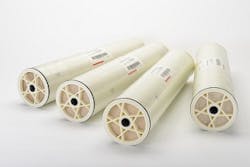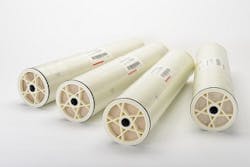Lanxess RO membranes reach year milestone treating brackish water in Serbia
A total of 400 reverse osmosis (RO) membranes from Lanxess have reached a year milestone for treating brackish water in an industrial scale in Serbia.
The Lewabrane elements are being used to treat water from the Danube for a refinery in Pančevo operated by Naftna Industrija Srbije (NIS).
The river water used in the NIS refinery at Pančevo is sourced around 15 km away from Belgrade at the tributary of the River Timiș into the Danube. It is pre-treated using flocculation and ultrafiltration before passing through three reverse osmosistrains, each equipped with 132 Lewabrane RO B400 LE elements.
Each train is capable of treating 100 cubic meters per hour. The permeate is subsequently desalinated using a multiple-stage process with ion exchange resins from LANXESS. Just under 30 cubic meters of Lewatit exchange resin of the types Lewatit MonoPlus S108, Lewatit MonoPlus M500 and Lewatit IN42 are used for this purpose.
The water treatment plant was built by WBG WasserBauGesellschaft International mbH from Kulmbach, Germany.
“We derived the required plant parameters based on a water analysis, using this to determine the pump performance and the size of the reverse osmosis and ion exchange plant,” explains Jens Lipnizki, head of technical marketing membranes in the Liquid Purification Technologies business unit at LANXESS.
Lanxess said the main area of application lies in the desalination of brackish water for the industrial and municipal sectors. The average salt rejection capacity is around 99.5% – based on an operating pressure of 10.3 bars.
###
Read more
Membrane technology helps German power plants improve water quality

